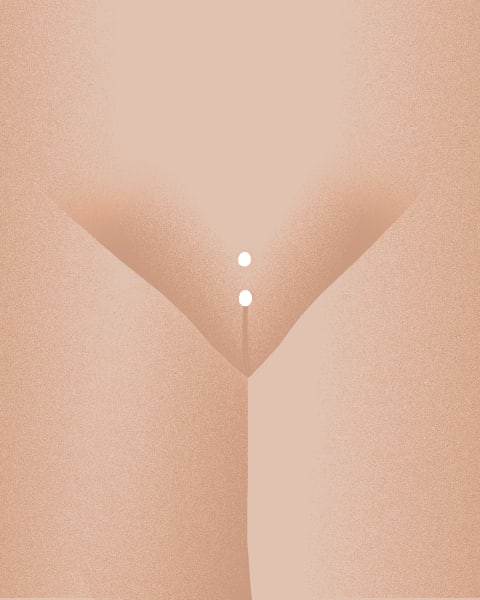Lip piercings are arguably the piercing that has such a range of options for placement. From the lower lip to the top, singles and pairs, whatever you like we can probably make it happen.
Now, lip piercings are still anatomy dependent and there is a lot for your piercer to consider when helping choose placement, however the antomy checks will vary depending on the type of placement and piercing you choose.
Single “Standard” Lip Piercing:
I’ve put the word “standard” into quotation marks beause we are going to talk through all the different placements of a single lip piercing that passes through the inside to the outside of the lip. There are so many to talk through! Some piercing placements even have fun names, although you don’t need to know those names in order to get the piercing.
For a standard lip piercing your piercer will be checking the anatomy on the inside of the lip, for where your frenulum sits, and will also be checking their markings on the outside aswell so that when you are relaxed, the back of the labret is sitting in a comfortable place that does not rest directly on your teeth. If you’re planning rings in the future, be sure to let your piercer know, so they can mark up appropriately. Initially, these should be pierced with straight labrets. Rings in fresh piercings can cause a lot of irritation.
Labret: Center of the bottom lip, sitting below the lipline.
Philtrum or Medusa: Centre of your upper lip, resting just above your cupids bow.
Side labret: Sitting one one side of the bottom lip, below your lipline. Often seen paired together as snakebites!
Monroe: Pierced above the upper lipline on the left hand side.
Madonna: Pierced above the upper lipline on the right hand side.
Vertical Lips:
Vertical lip piercings are exactly what they sound like! They are pierced with curved barbells, passing through vertically top to bottom of the lip. For this piercing, your piercer should be checking for the prominence of the lip, that will allow the curve to sit comfortably. This means that your lip needs to stick out enough, and be full enough, to support jewellery. Not everyone can have all vertical lip piercings.
Traditional Vertical Labret: Pierced vertically through the centre of the bottom lip.
Upper Vertical Labret: Pierced vertically through the centre of the top lip. Also known as a jestrum.
We’ve recently seen an increase of vertical lip piercings, especially being paired together, and they just look badass.
Paired Vertical Labrets: Two vertical labrets paired together on the lower lip. Typically seen close together, and on either side of the lip.
Paired Upper Vertical Labrets: Two vertical labrets paired together on the upper lip. Typically seen with a bit of distance between them, just on the outer edges of the cupids bow. Also known as angel fangs.
Pairs, Doubles and All the Fancy Names!:
Over the years, piercings have gathered all sorts of commonly used slang names, but lip piercings by far are notoriously known by their slang names, especially when it comes to multiples!
Dolphin Bites: Two lower labrets pierced below the lipline of the bottom lip, quite centered and close together.
Snake Bites: Paired labrets pierced below the lipline of the bottom lip, but quite seperated/typically seen either side.
Shark Bites: Double and paired labrets either side of the bottom lipline. (Think of them as double snake bites!)
Spider Bites: Paired labrets, pierced one one side of the bottom lip.
Angel Bites: Paired labrets pierced above the top lipline, typically seperated eitherside of the cupids bow.
Canine Bites: Paired upper and lower lips. Think of Angel Bites and Snake Bites.
Now of course these aren’t all the possibilities of lip piercings. These guys have been around for years, and will hopefully be around for many more!
The Fun and the Rare:
Theres a few more we havent touched on yet. The ‘Ashley’ and ‘Inverse Labrets’, large gauge, and low/highbrets.
The Ashley – A piercing that passes through the centre of the bottom lip, horizontally. Can be seen as pairs or by itself. Highly anatomy dependant, and either a curved or straight barbell. Your piercer should be looking for a ‘full’ and ‘prominent’ lip that would support a bar passing through.
Inverse Vertical Labrets – Very similar to a vertical labret, only it sits on the inside of the lip rather than the outer. Usually pierced with curved barbells.
Large Gauge Lip Piercings – Of course, just like any other piercing, we can pierce lips at a higher gauge too! An absolute perfect way to start if you wanted to stretch in the future.
Lowbrets/Highbrets – Typically these are just labret piercings pierced either much lower than the lipline, or much higher! Its a hybrid word of ‘high’ or ‘low’ and ‘labret’! Super cool.



Above is photos of Andre’s inverse vertical labrets that he had pierced many years ago and has healed them beautfiully.
We’d absolutely love to do more lip piercings at Rogue, so don’t hesitate to contact us or book in to discuss ideas or placements!








































































